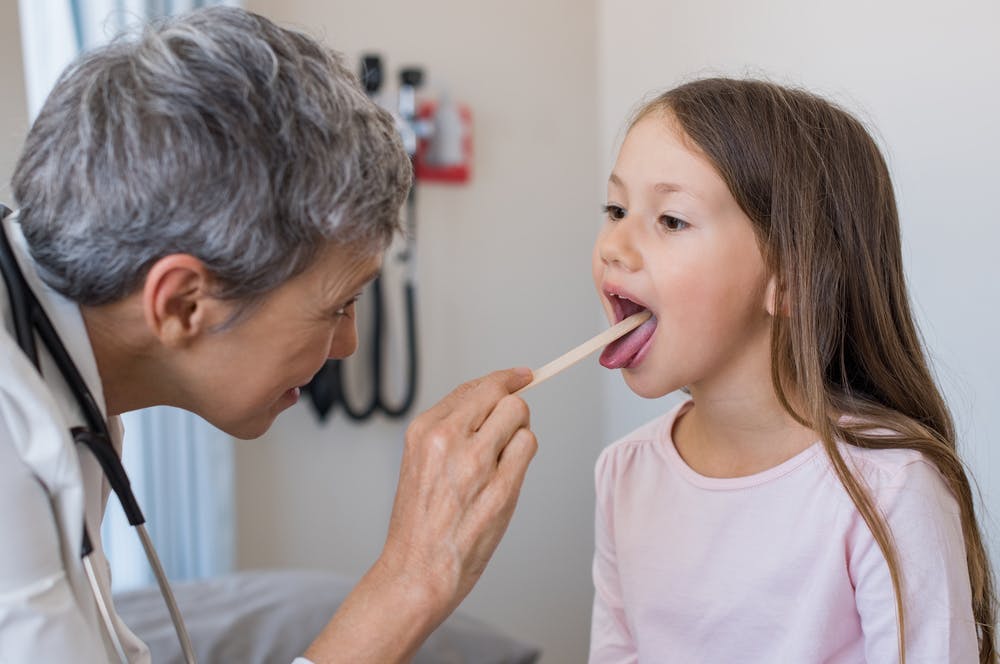What you need to know about pink eye (conjunctivitis)
Oh no, one of the kids has pink eye! What now?
Has your child awakened with redness and sensitivity in one or both eyes, along with a watery or pus-like discharge? You’ve probably got a case of pink eye on your hands, but don’t worry. It may be very contagious, but it rarely causes any serious problems.
What is pink eye?
Pink eye, also known as conjunctivitis, is an inflammation of the conjunctiva, a thin, transparent layer of tissue that covers the white part of the eye and inside of the eyelid. There are three types of pink eye: viral, bacterial, and allergic. Allergic conjunctivitis usually comes with seasonal allergies, is not contagious, and can be treated with normal allergy medications. Viral and bacterial conjunctivitis are easily passed from person to person, and it’s especially common for children to get it from classmates in the fall and winter.
Viral vs. Bacterial pink eye
It’s important to know which kind of conjunctivitis you are dealing with, as the treatment is different. Both viral and bacterial conjunctivitis symptoms can include redness, irritation, and sensitivity to light in one or both eyes. The viral kind tends to come with a clear, watery discharge, while the bacterial kind produces pus or mucus, which can often form a crust that may seal the eye shut while sleeping. Viral conjunctivitis will go away on its own in a week or two, while the bacterial type should be treated with a prescription of antibiotics. If you or your child has bacterial conjunctivitis or you’re not sure which kind you have, a trip to your neighborhood Urgent Care center can help you get the right treatment.
Pink eye relief
- Clean discharge from the eyes with a warm cloth or cotton balls several times a day.
- Avoid touching or rubbing your eyes, and stop wearing contact lenses or eye makeup
- Lay a warm washcloth gently over the eyes until it cools to relieve discomfort.
- Use over-the-counter lubricating eye drops, but do not use redness-reducing eye drops. These can irritate the eyes and make the condition worse.
- Over-the-counter painkillers like ibuprofen can also help.
How to prevent the spread of pink eye
- Wash hands frequently with soap and warm water for at least 20 seconds, especially after cleaning the eyes, applying drops, or handling sheets and pillowcases used by the infected person.
- Throw away used cotton balls and wash used washcloths and bed linens with hot water and detergent daily.
- Carefully clean eyeglasses and avoid shared use of towels, bed linens, or any other items in contact with the infected person.
- Throw away any eye cosmetics or eye care items that have been used while infected.
When should you go see a healthcare provider for pink eye
- If you think your newborn infant has pink eye seek medical attention right away. A rare form of conjunctivitis can affect newborns and potentially cause sight damage.
- Your child (or you) has a heavy yellow or green eye discharge. This indicates a bacterial infection that can be treated with antibiotics.
- Your child (or you) wake up with your eyelids sticking together. This also may indicate a bacterial infection.
- Your child (or you) has eye pain, blurred vision, high fever, or chills. These symptoms may suggest a more complicated or serious condition that needs treatment.
Pink eye (conjunctivitis) can seem scary because it is quite contagious, but usually, it’s not a major health problem and can be controlled by carefully exercising the hygiene pink eye tips listed above. If you are worried about the symptoms, or if you think your child may have bacterial conjunctivitis, we are here to help. You can walk in any time, or you can check in online before you come to see us. We can help your child get the right pink eye treatment and keep everyone in the house clear-eyed and healthy!
Written by Sarah Thebarge, Physician Assistant


